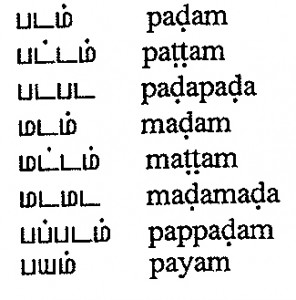Frame 1
ட |
ப |
ம |
ய |
ta/da |
pa/ba |
ma |
ya |
ட் |
ப் |
ம் |
ய் |
t |
p |
m |
y |
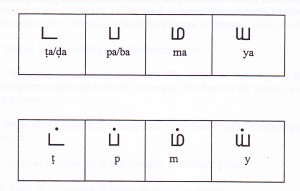
![]() (t) is produced by the tip of the tongue curved towards the back and making contact at the roof of the mouth. When the contact is released the air escapes through the mouth. It occurs initially in the borrowed words. This occurs in a word as the first member of a consonant cluster, as the second member of a consonant cluster and in at identical consonant cluster.
(t) is produced by the tip of the tongue curved towards the back and making contact at the roof of the mouth. When the contact is released the air escapes through the mouth. It occurs initially in the borrowed words. This occurs in a word as the first member of a consonant cluster, as the second member of a consonant cluster and in at identical consonant cluster.
The ![]() has two sound values. One is voiceless and another is voiced. The one that described above is voiceless. The voiced one is produced in the same manner except for the vibration in the vocal cords. This voiced sound (d) is used between two vowels.
has two sound values. One is voiceless and another is voiced. The one that described above is voiceless. The voiced one is produced in the same manner except for the vibration in the vocal cords. This voiced sound (d) is used between two vowels.
![]() (p) in its production the lips are closed and the soft palate is raised to close the nasal passage. When the lips are opened the air suddenly comes out with explosion. There is no vibration in the vocal cords. This sound is described a voiceless bilabial stop. This occurs in the word initial and medial positions. It occurs medially as the first member of a consonant cluster, as the second member of a consonant cluster and in an identical consonant cluster.
(p) in its production the lips are closed and the soft palate is raised to close the nasal passage. When the lips are opened the air suddenly comes out with explosion. There is no vibration in the vocal cords. This sound is described a voiceless bilabial stop. This occurs in the word initial and medial positions. It occurs medially as the first member of a consonant cluster, as the second member of a consonant cluster and in an identical consonant cluster.
The usual hand movement in writing Tamil letters is from the left to the right and from the top to the bottom. Note the strokes of the letter ![]() (ta) and
(ta) and ![]() (pa) as given below. Copy them three times each. Your letter should be similar to the one on the extreme right side.
(pa) as given below. Copy them three times each. Your letter should be similar to the one on the extreme right side.
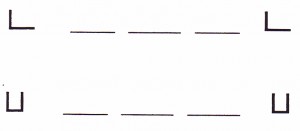
Lips are closed when ![]() (m) is produced. The soft palate is lowered and the air stream comes freely through the nasal cavity. The vocal cords are vibrated in its production. This is a voiced bilabial nasal.
(m) is produced. The soft palate is lowered and the air stream comes freely through the nasal cavity. The vocal cords are vibrated in its production. This is a voiced bilabial nasal.
This occurs in the word initial, meddle, and final positions.
Compare the letters for (pa) and (ma). Note the similarity and the difference between them. Copy them three times each. Your letter should be similar to the one given at the extreme right.
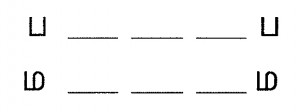
![]() (y) in its production the lips are spread. The front of the tongue is raised towards the hard plate. The soft palate is raised. The air stream passes through the stricture and the vocal cords are made to vibrate. This is a voiced palatel frictionless continuant. This occurs in all positions.
(y) in its production the lips are spread. The front of the tongue is raised towards the hard plate. The soft palate is raised. The air stream passes through the stricture and the vocal cords are made to vibrate. This is a voiced palatel frictionless continuant. This occurs in all positions.
Compare the letter for (pa) with that for (ya) and note the difference. Copy them three times each. Your letter should be similar to the one given at extreme right.
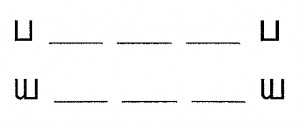
The letters with a dot above like ![]() etc., are pure consonants in Tamil. The letter without a dot represents the corresponding consonant + the vowel.
etc., are pure consonants in Tamil. The letter without a dot represents the corresponding consonant + the vowel.
Example:

![]()
Read the following words:
